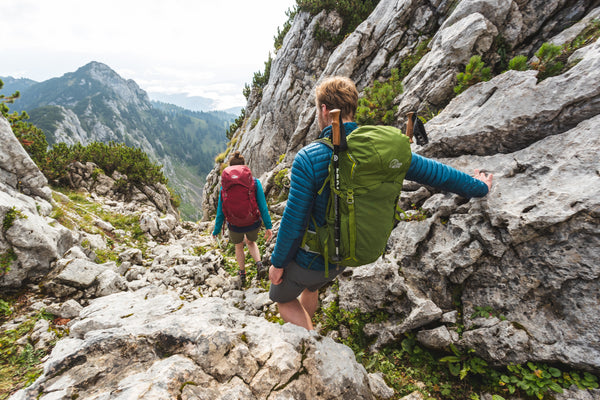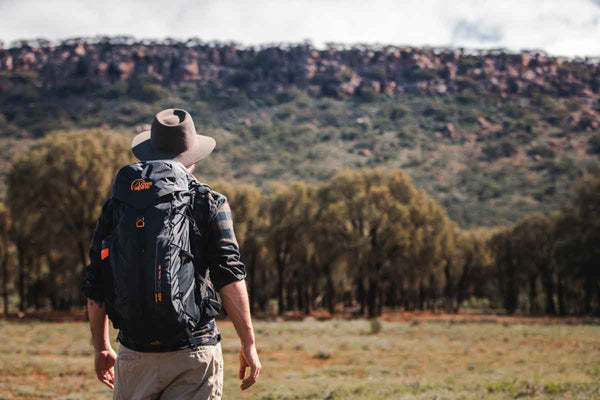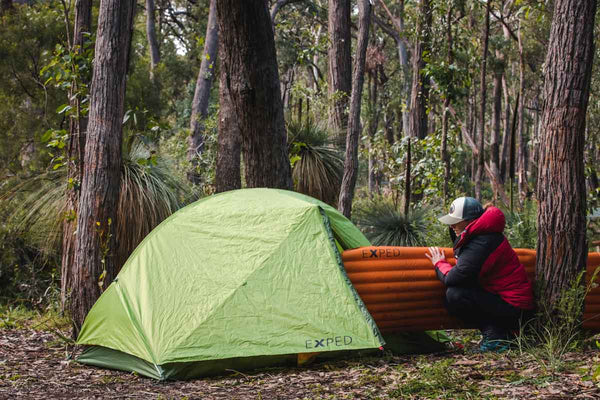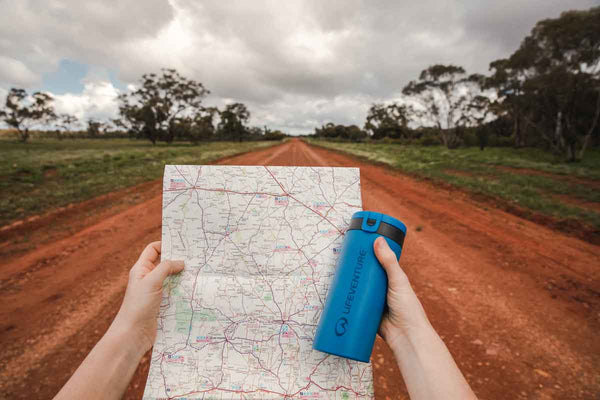
Packs Guide
Outdoor gear manufacturers have spent years refining pack harnesses and features to the point that there really is a bag for everyone and any activity. Due to the range of body shapes and pack sizes there is no single harness design that fits all people, no matter how adjustable it may be. So you will find that most pack manufacturers produce at least two harness lengths, and they may also vary in shoulder width. A ‘women’s fit’ harness is now common among all top brands - these harnesses have a narrower shoulder harness, a slightly shorter back length and a differently shaped hip belt. We use the five catagories of packs listed below.
Day Packs
Day packs fulfil myriad uses like stowing gear for a day out on a trail, a packable lightweight bag for touring towns and cities, carting a laptop and files to work or college, or for active outdoors folk who need a specialist pack. There are two main designs: lids, which provide a weather resistant cover to the main compartment, and zipped compartments for rapid access. We recommend a rain cover for both designs unless the pack is specifically designed to be waterproof. In general day packs fall into four categories, but of course there is no rule to say one bag can’t do more than one job!
Light day packs start at 15 litres and range up to around 33 litres. These bags are designed to take anything from just a snack and a book to wet-weather gear, or spare clothing for a trip to the gym. Ideal for general day walkers, they tend to be comfortable mesh-covered harnesses and made of tough materials.
Multi-activity packs are typically slimmer and more contoured than regular day packs and are ideal for runners, mountain bikers and adventure racers, but can also be used for a stroll. These packs tend to have ergonomic harnesses and are lighter weight. Volumes range from 12 to 30 litres.
A pack for a day out around town may have to accommodate gym kit or a laptop and files. Around town packs tend to have many organiser compartments, reinforced laptop sleeves and be made of robust materials. Volumes range from 20 to 28 litres.
A spare bag while travelling can always come in handy when you want to wander around the sights of some faraway place. These bags have no frame, minimal padding so they can be compressed, and they take up hardly any space in your pack when not needed. Volumes range from 20 to 30 litres.
Mid Sized Packs
If you’re planning an overnight camping trip, a day walk with the kids, technical alpine day hikes (via ferrata) or an extended trek with porters or luggage service then mid-sized packs are ideal. These bags typically range from the 35 litre capacity up to 50 litre models. Being designed to carry moderately heavy loads these packs either come in different back lengths or have harness length adjustment.
Over recent years these bags have become very popular for travellers to hot climates who want to limit themselves to carry-on luggage. We recommend taking a packable day-pack for sightseeing or for around town use.
However, it is walkers and trekkers who need to carry a range of gear while out for a full day in the mountains that benefit most from this size of pack. Remember, if you’re in hot climates then suspended harnesses dramatically increase ventilation and comfort. Or for those in cool to cold climates you might need to consider the 40 litre plus models to accommodate that fleecy jacket.
Walking Packs
Walking packs are designed to carry heavy loads (between fifteen and twenty five kilos) over long distances and rough terrain. It is critical that your pack fits perfectly, has adequate room to pack all the necessary gear, and be robust enough to cope with the elements.
All walking packs are designed not to extend beyond your shoulder width as this allows easier progress through bush and scrub. So, to increase volumes they extend upwards behind your head – ideally you don’t want a load to extend above your head. This means that walking packs have a slim, contoured design which allows you to have complete control over load distribution.
Many walking packs have two compartments for ease of access and better load distribution - having a compartment separator stops everything from sliding down to the bottom of the bag. A second compartment is also handy if you want to use your pack travelling when you can separate overnight necessities from general gear. However, single compartment bags tend to be lighter and more weather resistant (less zips and seams). It can be tough trying to work out which size you need, so here is a general guide:
50 to 60 litres
When walking within a group these packs are ideal for trips up to 4 days (includes carrying tent, stove, food and fuel). If you are solo then you’ll be lucky to get a few days worth of kit inside the bag. Can carry loads between 15 and 20 kilos.
60 to 75 litres
The most popular size of walking pack. When walking within a group these packs are ideal for trips up to 7 days (includes carrying tent, stove, food and fuel). If you are solo then you’ll be lucky to get 7 days worth of kit inside the bag. Ideal for carrying loads between 17 and 22 kilos.
75 litres plus
These packs are for long hauls and expeditions of 7 days or more. Designed to carry loads of over 20 kilos these packs are not for the faint hearted!
Travel Packs
Travel packs are all about carrying a convenient load while on the road. Due to their size and volume nearly all travel packs have some sort of adjustable harness, and choosing a pack that fits perfectly is just as important as ever - the last thing you need is a pack that makes your back sore and makes travelling a slog.
As you are most commonly only allowed to take 20 kilos as check-in luggage it is almost certain that the bag will, at some point, weigh 20kg. So when you try on different models get the staff to put 15 to 20kg in the pack - only then will you know if the harness fits you correctly.
Pack design should always be related to the intended use, so travel packs fall into two categories:
- Business or urban travellers who need to keep clothing fairly neat and tidy.
- Casual backpackers and travellers who want lightweight convenience.
Travel packs for business and urban travellers have some sort of panel reinforcing within the bag which provides the same sort of gear protection as a suitcase. These bags might have wheels and only a simple harness and, as in the One Planet Wheelie, the pack may be a ‘clam’ design with a fully adjustable harness.
Casual backpackers tend not to need un-creased clothing, so soft-sided packs which are lighter to carry tend to be the ideal. These bags tend to be simpler in design as internal pockets and compartments both add weight and cost.
All travel packs offer some similar features; a built-in cover to protect the harness when it is not being used, front access to the main compartment for easy loading, sturdy lockable zips, side carry handles and internal compression straps to stop your gear from sliding around. Some also have detachable day packs for sightseeing or day trips.
Hybrid Packs
Hybrids provide the international trekker and bushwalker with the load carrying ability of a walking pack and the convenience of a travel pack. These bags are typically a little heavier than a regular walking pack but that’s because they’re jammed full of features which are designed to make life easier both in the field and while travelling.
All hybrids should look somewhat like a walking pack in general design and this means that hybrids have the same load carrying comfort as walking packs. However, they also boast most of the same features as a travel pack; harness cover, front access to the main compartment (and a separate bottom compartment), lockable zips, side carry handles and internal compression straps.
Hybrids also tend to be a little larger than travel packs as manufacturers assume you may need to pack a tent, stove, food and general camping gear. Although heavier than a dedicated walking pack, hybrids are great for adventure travellers who want to experience the thrills of urban travel before wandering off in to the wilderness now and again.





